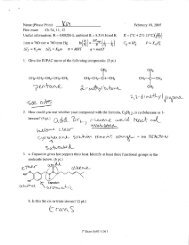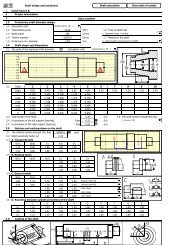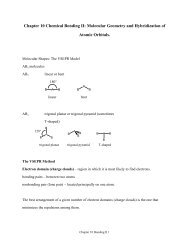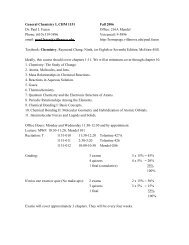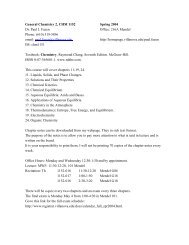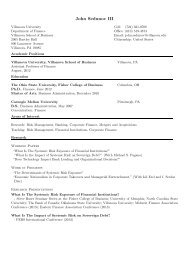Chapter 4 - Reactions in Aqueous Solution
Chapter 4 - Reactions in Aqueous Solution
Chapter 4 - Reactions in Aqueous Solution
Create successful ePaper yourself
Turn your PDF publications into a flip-book with our unique Google optimized e-Paper software.
• The oxidation number of fluor<strong>in</strong>e is –1 <strong>in</strong> all compounds. The other halogens have anoxidation number of –1 <strong>in</strong> most b<strong>in</strong>ary compounds. When comb<strong>in</strong>ed with oxygen, as <strong>in</strong>oxyanions, they have positive oxidation states.• The sum of the oxidation numbers of all atoms <strong>in</strong> a neutral compound is zero. The sum of theoxidation numbers <strong>in</strong> a polyatomic ion equals the charge of the ion.Maximum oxidation number = group number.M<strong>in</strong>imum oxidation number = group number – 8.ex: NO 3– Oxidation number of N is +5.NH 3 Oxidation number of N is –3.Substances that are oxidized are reduc<strong>in</strong>g agents.Substances that are reduced are oxidiz<strong>in</strong>g agents.Types of Redox <strong>Reactions</strong>• Comb<strong>in</strong>ation reactionsC(s) + O 2 (g) → CO 2 (g)3Mg(s) + N 2 (g) → Mg 3 N 2 (g)• Decomposition <strong>Reactions</strong>2KClO 3 (s) → 2KCl(s) + 3O 2 (g)• Displacement <strong>Reactions</strong>Ch 4 <strong>Reactions</strong> <strong>in</strong> <strong>Aqueous</strong> <strong>Solution</strong> - 10 -



